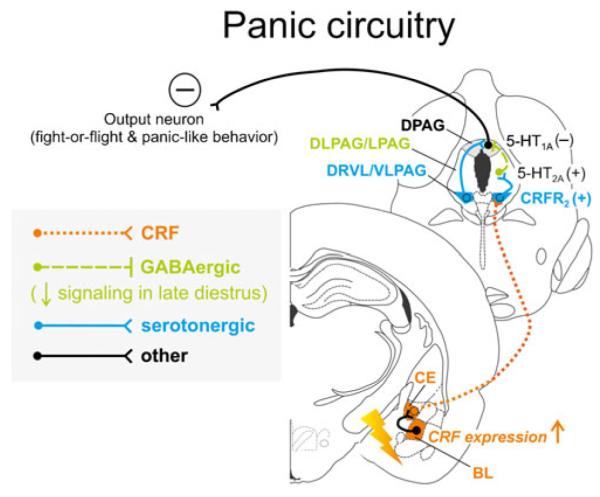Fig. 4.

Hypothetical model of how stress-induced increases in corticotropin-releasing factor (CRF) expression and signaling from the basolateral (BL) and central (CE) amygdaloid complex likely function to activate serotonergic output from the “lateral wings” of the dorsal raphe nucleus (DR) and may interact with decreased GABAergic inhibition from the periaqueductal gray (PAG) during late diestrus to increase panic-like responses. During late diestrus in rodents, declining circulating concentrations of progesterone and its neuroactive metabolite allopregnanolone cause increased expression of α4, β1, and δ subunits of the γ-aminobutyric acid (GABA) receptor type A within the PAG [143, 144], ultimately resulting in attenuated ongoing GABAergic inhibitory signaling [221] within the panic-related dorsal PAG (DPAG). Stress-induced elevation of CRF within the BL leads to increased CRF release from CE projections that target the “lateral wings” of the DR, namely, the ventrolateral portions of the DR and PAG (DRVL/VLPAG), either acting on CRF receptor type 2 (CRFR2) directly on serotonergic neurons [204] or indirectly via CRFR2-mediated inhibition of nonserotonergic neurons [289]. This normally leads to increased activation of the DRVL/VLPAG, increased serotonergic output to distal target sites, and postsynaptic 5-HT1A-mediated and/or 5-HT2A-mediated inhibition of panic-like responses. During late diestrus, however, decreased GABAergic signaling disinhibits the DPAG, facilitating fight-or-flight and panic/escape-like responses [134]. Neuronal projections are drawn unilaterally solely for simplicity and do not imply functional laterality
